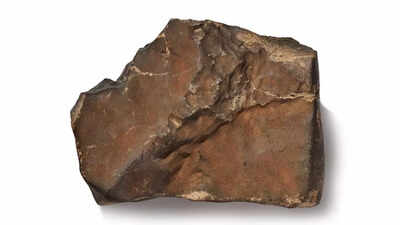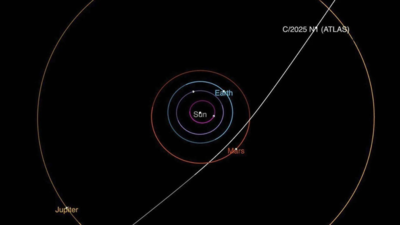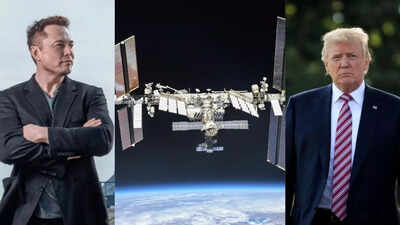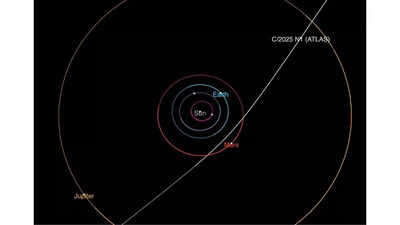Shubhanshu Shukla answers students’ questions about life on the ISS: From eating to floating in space |
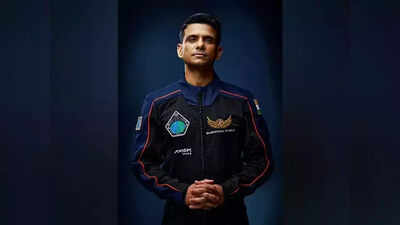
Shubhanshu Shukla‘s interaction with students: In a landmark moment for Indian space education, students from City Montessori School and other institutions participated in a live interaction with Group Captain Shubhanshu Shukla, the first Indian astronaut to reach the International Space Station (ISS). Organised under ISRO’s Vidyarthi Samvad Programme, the session offered a rare opportunity for young minds to engage directly with a spacefarer orbiting hundreds of kilometres above Earth.This initiative not only allowed students to gain a deeper understanding of life in space but also aimed to ignite their curiosity about science, technology, and India’s growing role in space exploration. For the students who participated, the interaction was nothing short of transformational. Hearing directly from an Indian astronaut in space made science tangible, real, and deeply exciting. It was more than a Q&A—it was a moment that connected generations through culture, science, and national pride. Through his stories and insights, Group Captain Shubhanshu Shukla brought the mysteries of space closer to Earth and reminded young Indians that even the stars are within reach.
Shubhanshu Shukla interacts from ISS: Students ask about daily life in space
From the very beginning of the interaction, students were eager to understand what life is like beyond Earth. Their questions were diverse, ranging from everyday routines to more complex biological and scientific phenomena. They wanted to know how astronauts adapt to zero gravity, how daily hygiene works in space, and what happens during emergencies. The curiosity extended to space food, physical training before launch, and even mental health support while in orbit. This genuine inquisitiveness reflected the excitement of young minds witnessing history, speaking directly to an astronaut who had experienced the marvels and challenges of life in space firsthand.
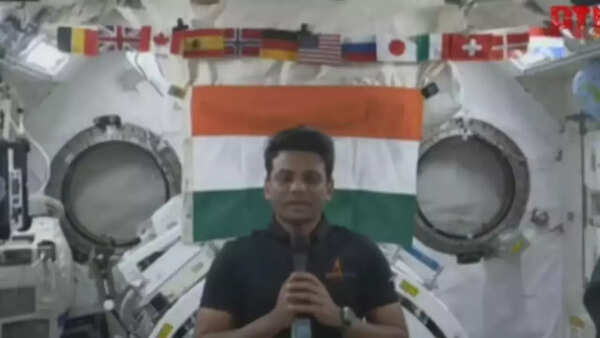
A. How do astronauts sleep in space
Shukla responded with enthusiasm, explaining that without gravity, there’s no concept of “up” or “down.” Astronauts don’t sleep on beds like on Earth—instead, they use sleeping bags secured to the walls or ceiling inside the ISS. “It’s fun, actually. You can float and tie yourself anywhere—on the walls, even the ceiling. But to avoid drifting away, we anchor our sleeping bags in place. Otherwise, we might not be in the same spot in the morning,” Shukla said with a smile.
B. Eating in space: Food, nutrition, and a taste of home
Food was another hot topic among students. Shukla explained that astronauts rely on pre-packaged meals specially designed to meet nutritional needs in microgravity. However, food also plays an important psychological role in space. “Food is one of the few pleasures in space. So we get to choose from a variety of options,” he said.Adding a personal touch, Shukla shared that he carried a few favorite Indian sweets like Gajar ka Halwa, Moong Dal Halwa, and Aam Ras to space. This not only offered comfort but also connected him to his cultural roots while far from home.
C. Health and emergencies in orbit
One of the more serious student questions was about medical emergencies. What happens if someone falls ill on the ISS?Shukla explained that astronauts undergo rigorous health training before their mission and the station is stocked with adequate medical supplies. Although there is no doctor on board, astronauts are trained to handle most common issues. “We carry sufficient medicines and are prepared for various scenarios. Safety and health protocols are strictly followed,” he reassured.
D. Emotional joy of gazing at Earth
Beyond the technical and physical challenges, students were also curious about the emotional side of space travel. One asked what astronauts do during their free time.Shukla admitted that astronauts have very limited leisure time, but when they do, they enjoy watching Earth from space—something he described as profoundly moving. “The view of Earth from the ISS is incredible. It’s so peaceful and beautiful. We all look forward to that quiet time of reflection,” he said. Astronauts also engage in light recreational activities like watching shows or playing simple games when time permits.
E. Adapting the human body to microgravity and back again
Another fascinating aspect covered during the interaction was how the human body copes with microgravity. Shukla explained that initially, the body feels disoriented in the absence of gravity, but over time, it adjusts.“Right now, I feel much better than I did on my first day here. The body learns to adapt,” he said.However, he added that returning to Earth brings its own challenges, as the body has to re-learn how to function under gravity. “Readjusting after returning to Earth is a process. We need specific training and support because re-entry impacts muscles, balance, and overall functioning,” he explained.
Indian astronaut Shubhanshu Shukla becomes first to enter ISS during Axiom Mission 4
Shukla also shared his experience of the launch during the interaction. As part of Axiom Mission 4, he lifted off from the Kennedy Space Center in Florida on June 25, 2025, along with three other astronauts. After orbiting the Earth for 28 hours, their spacecraft docked with the ISS.On June 26, Shukla made history as the first Indian to step into the ISS, receiving warm welcomes and handshakes from fellow astronauts. He marked the occasion by declaring: “Jai Hind, Jai Bharat.”With this, Shukla became the 634th astronaut in the world and the second Indian to travel to space, following Rakesh Sharma, who ventured into orbit in 1984. Shukla is not only the first Indian to reach the ISS but also one of the four astronaut-designates for India’s upcoming Gaganyaan mission, the country’s maiden manned spaceflight programme. During the interaction, Group Captain Angad Pratap, another key figure in Gaganyaan, was present in Lucknow to promote awareness about India’s space initiatives. His presence added weight to the educational event and further inspired students to dream big.Also Read | Earth’s faster spin may cause shorter days, scientists warn — should you be concerned



